NSC1103 Assignment: Concept Map on ADH and Urine Regulation
VerifiedAdded on 2023/02/01
|6
|1322
|93
Homework Assignment
AI Summary
This assignment explores the homeostatic mechanisms related to antidiuretic hormone (ADH) and its role in regulating urine formation. The paper begins by explaining how ADH, produced by the hypothalamus and stored in the posterior pituitary gland, influences the kidneys to manage water balance, leading to the production of concentrated or dilute urine based on plasma osmolality. It then delves into diabetes insipidus, a condition characterized by the production of excessive dilute urine due to ADH deficiency, and how this alters the contents of urine. The assignment highlights the interconnectedness of these two aspects, using a concept map to visually represent the physiological processes. The paper details the mechanisms of ADH action, including how it increases the permeability of the kidney's capillary walls to reabsorb water, leading to concentrated urine when ADH levels are high. Conversely, when ADH release is inhibited, the permeability decreases, resulting in dilute urine. The impact of diabetes insipidus is discussed, emphasizing how the lack of ADH leads to decreased water reabsorption, the production of large volumes of dilute urine, and potential complications like dehydration and imbalances in blood sugar levels. Finally, the assignment concludes by explaining the body's compensatory mechanisms to regulate blood sugar and maintain solute balance in the context of diabetes insipidus.
1 out of 6
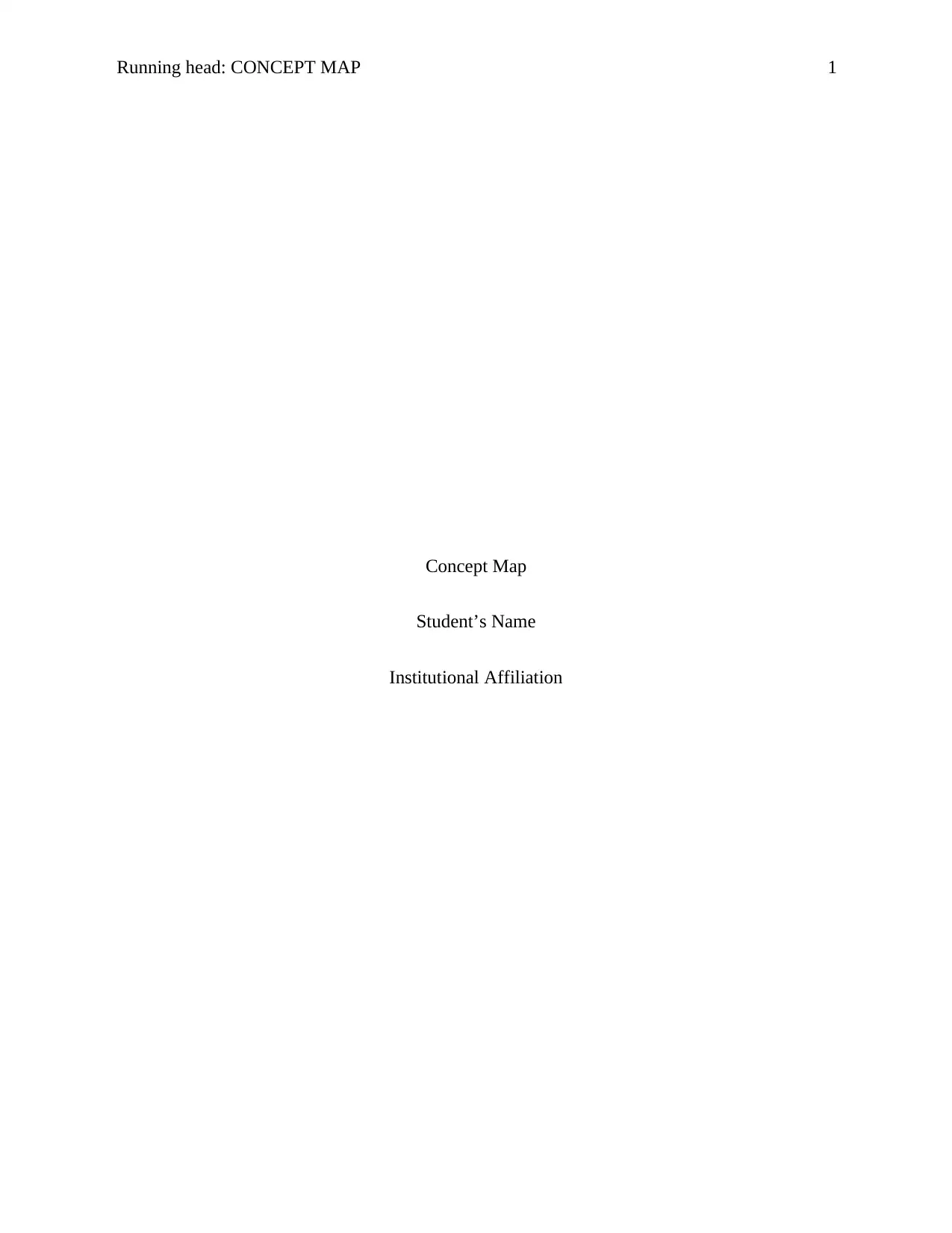
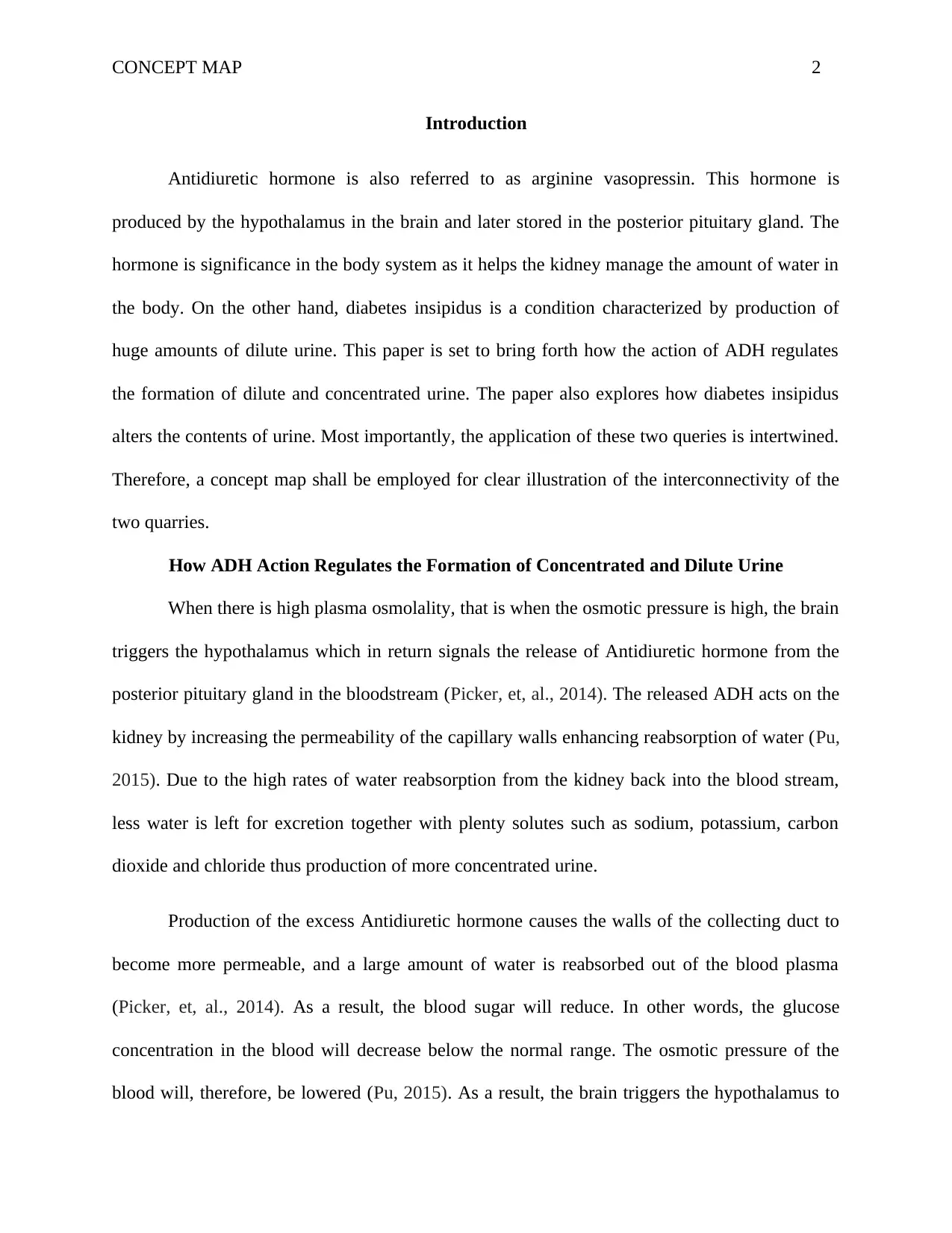
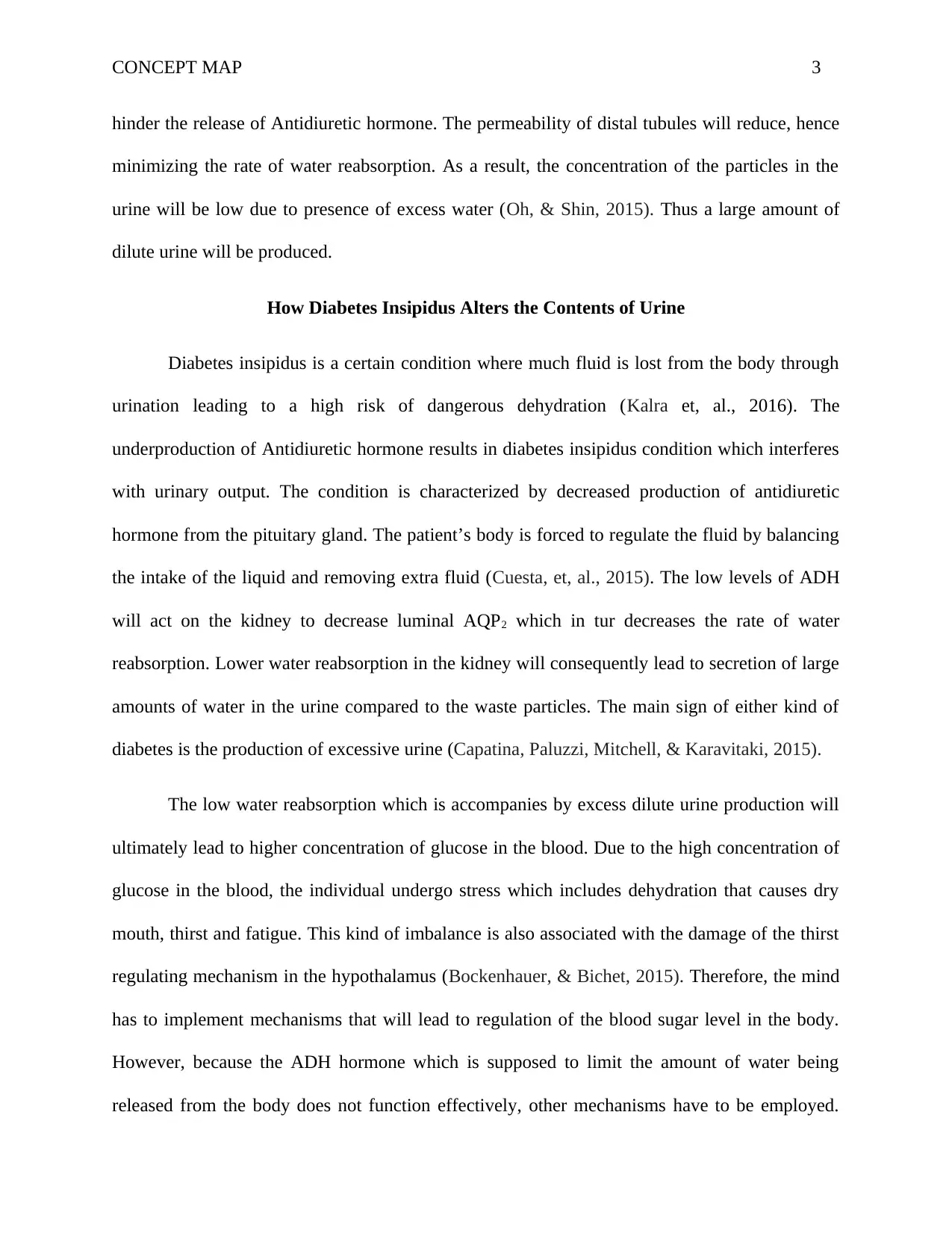

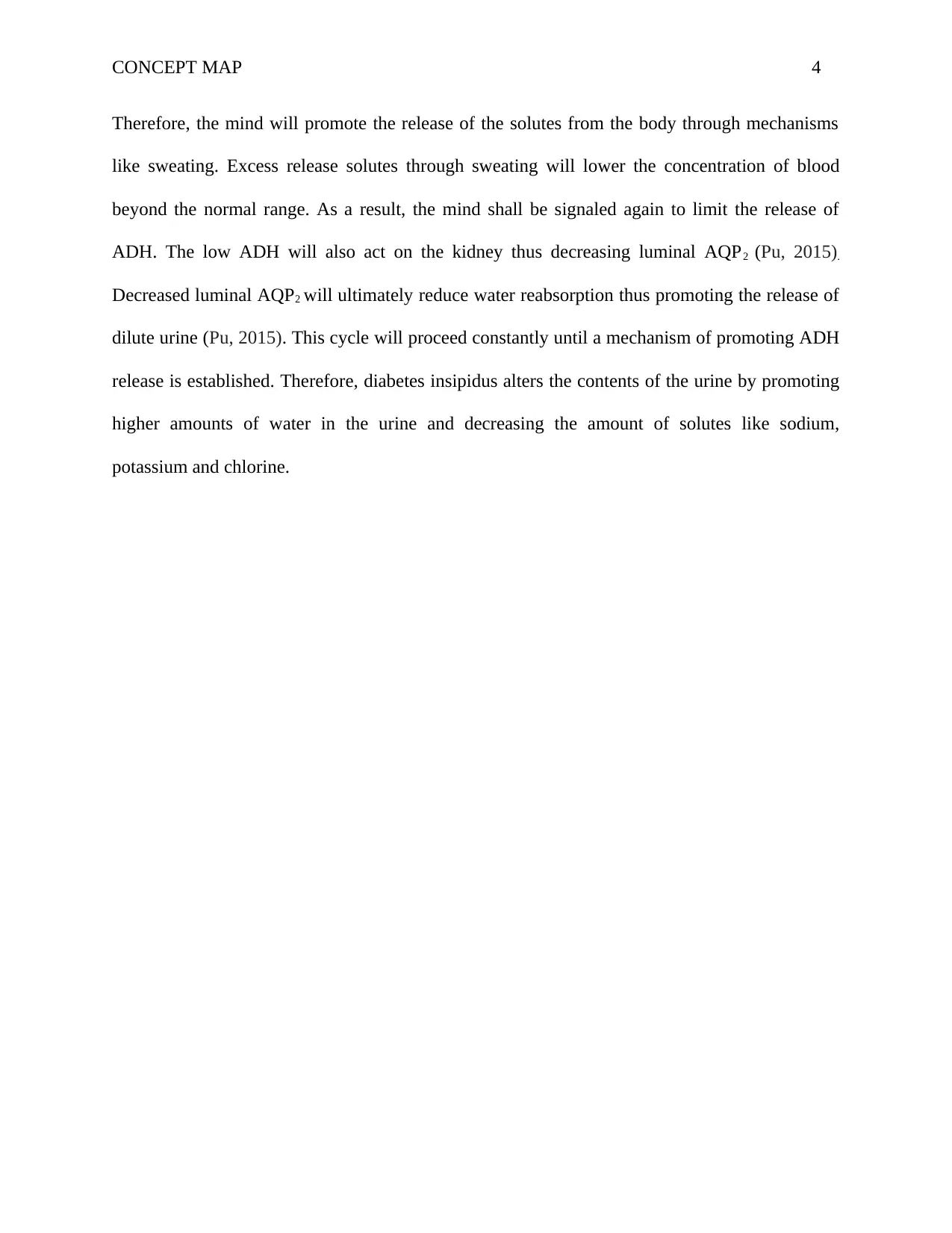
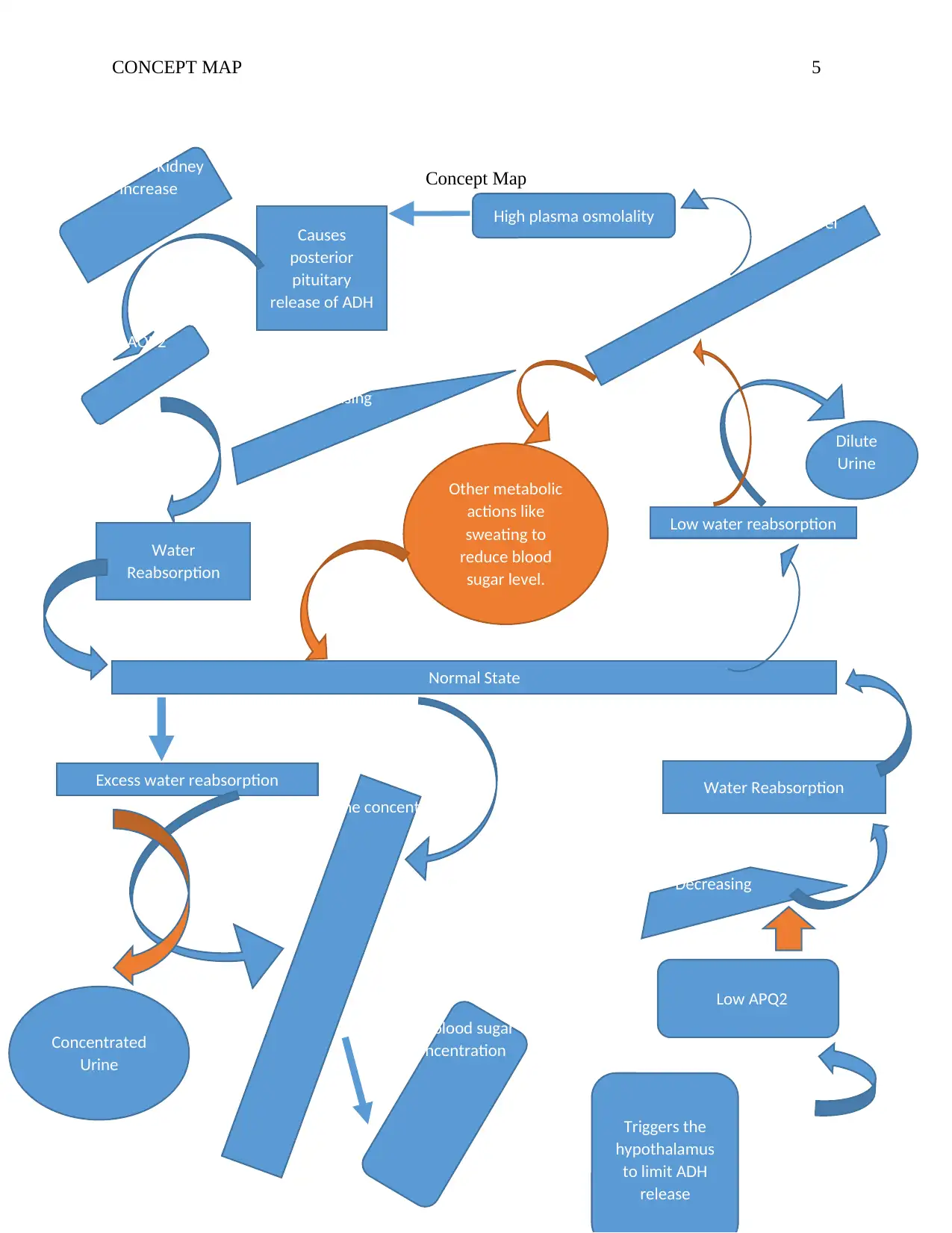
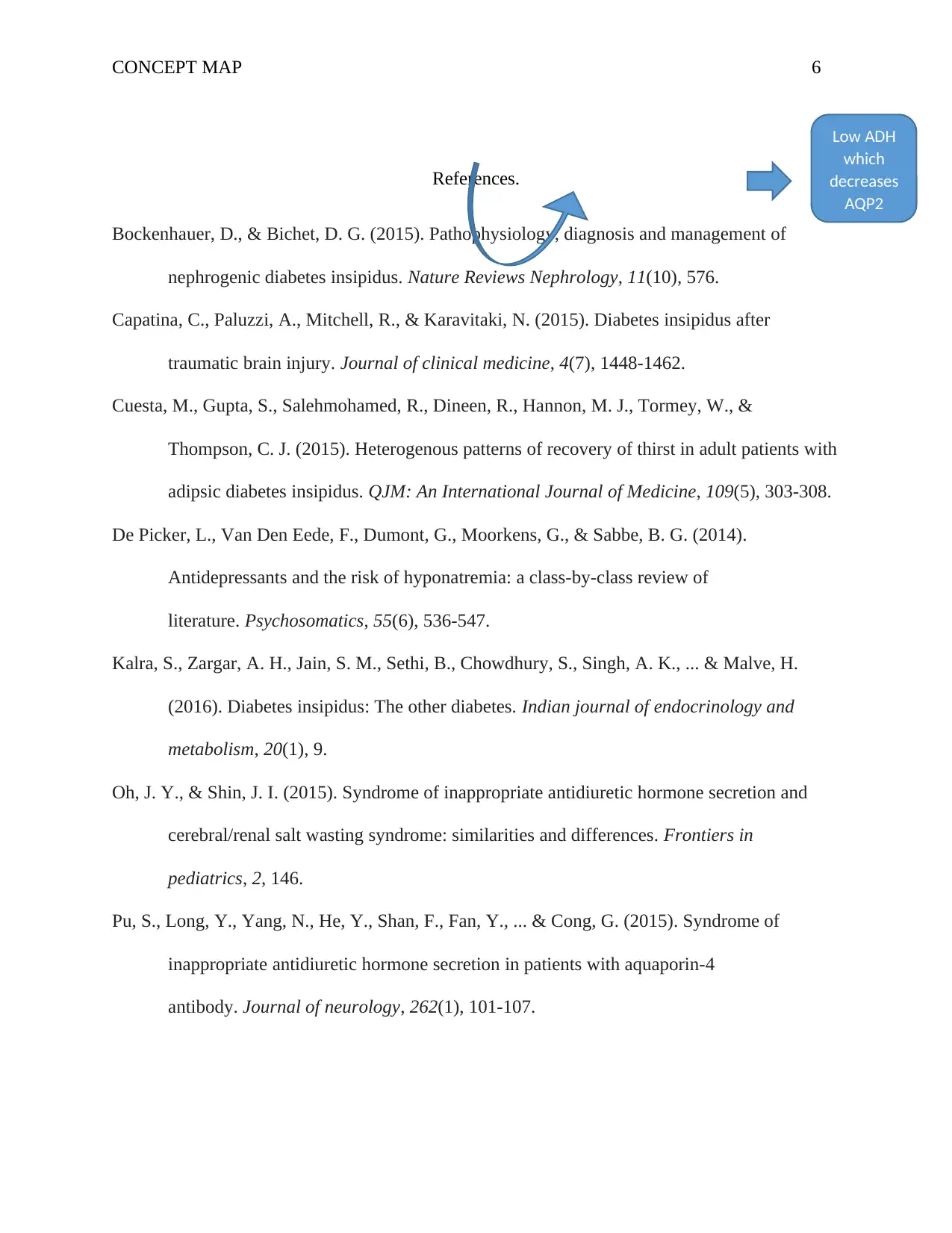






![[object Object]](/_next/static/media/star-bottom.7253800d.svg)